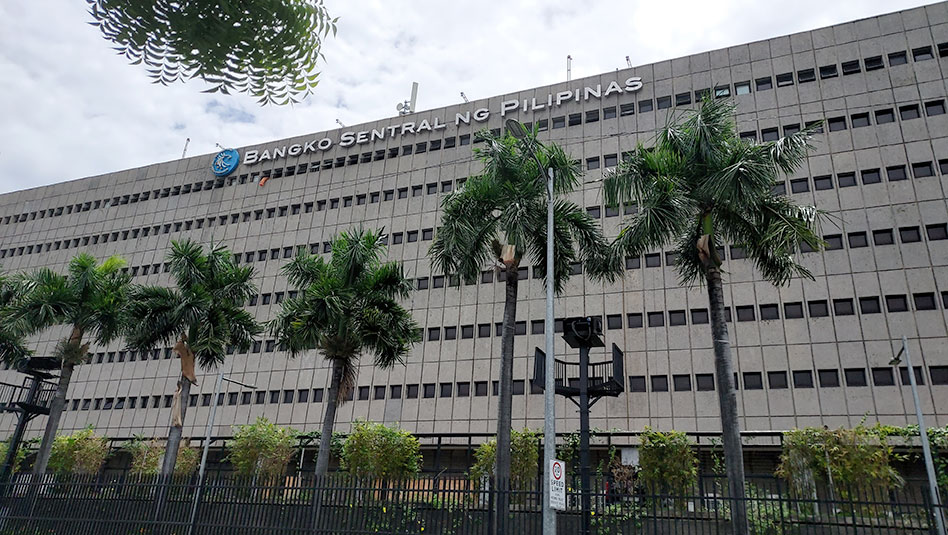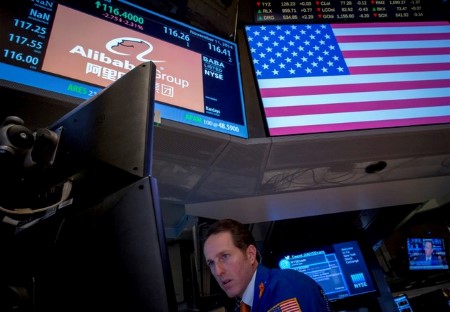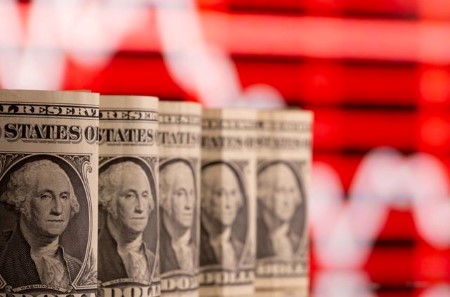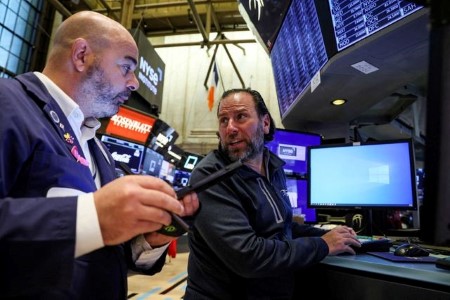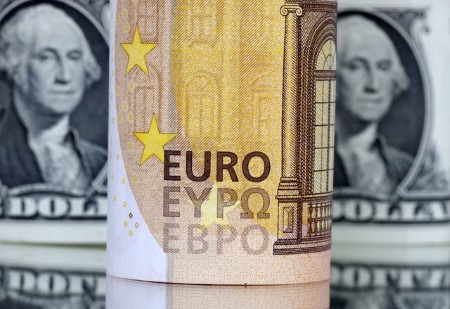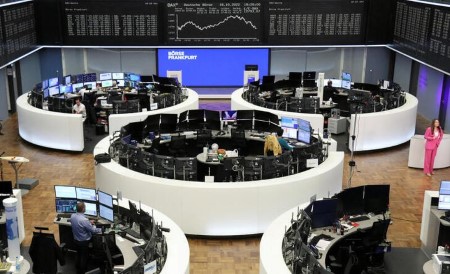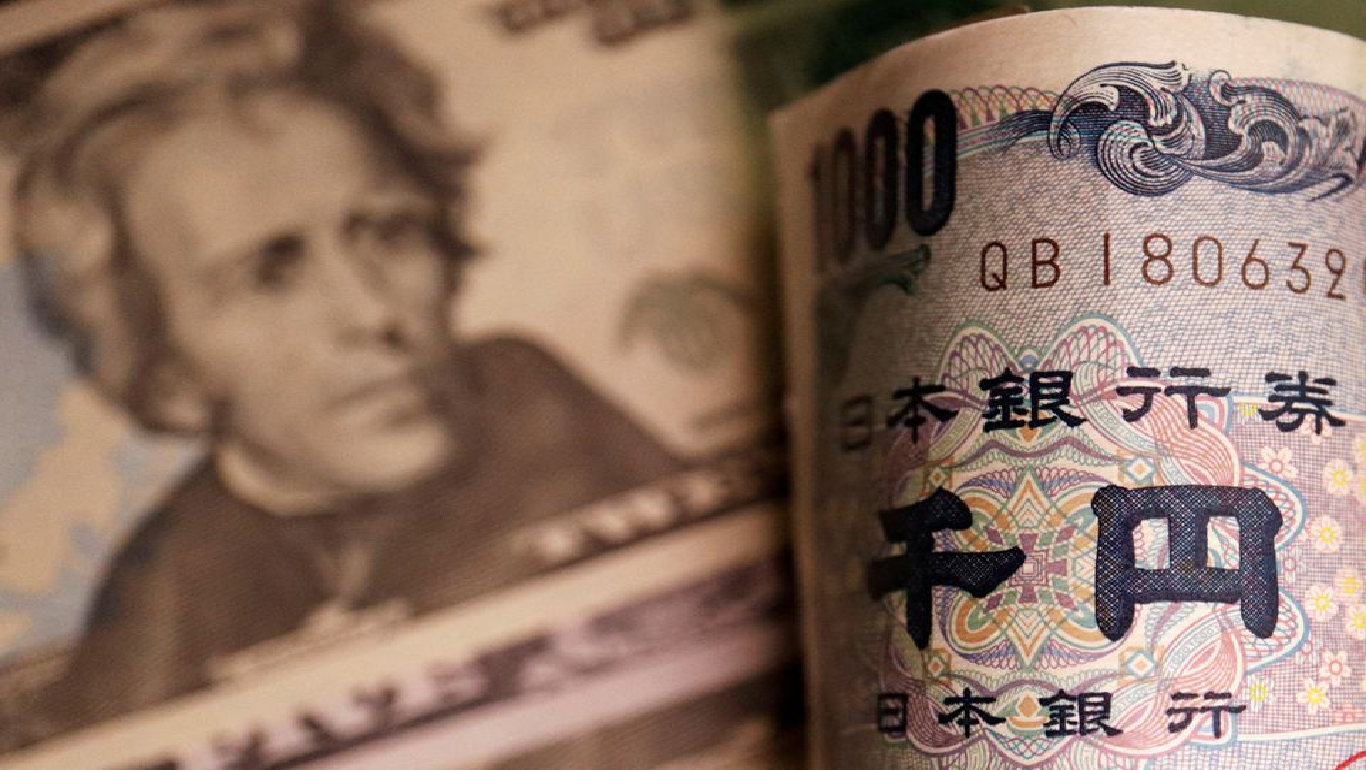TOKYO/LONDON/NEW YORK, Oct 21 (Reuters) – Japanese authorities likely intervened in markets to stem the slide of the country’s battered currency on Friday, market participants said, following an unexpected jump in the yen against the dollar.
The yen rose as high as 144.50 per dollar on Friday, up more than 7 yen from a 32-year low of 151.94 yen per dollar, touched earlier in the session. The dollar was last down 1.8% at 147.34 yen.
“It’s very clearly the ministry of finance stepping in to sell dollar-yen,” said Mazen Issa, senior FX strategist at TD Securities in New York.
Karl Schamotta, chief market strategist at Corpay in Toronto, concurred. “We are hearing large blocks are being traded,” he said. “That typically means either larger institutions are moving money or that a central bank is intervening in size. The clearest evidence is just the scale of dollar selling that is happening.”
The Nikkei, citing a source, also said Japan had intervened to buy yen and sell dollars.
Japan’s Ministry of Finance declined to comment.
If confirmed, this would be the second time since September that Japan has intervened in the currency market to shore up the yen.
The currency, down about 22% against the dollar this year, has been battered as the Bank of Japan sticks to an ultra-loose monetary policy, while the US Federal Reserve and other major central banks aggressively raise interest rates.
The falling yen is pushing up import costs and households’ living expenses, piling pressure on Prime Minister Fumio Kishida to stop the relentless fall.
WARNING SPECULATORS
While Bank of Japan Governor Haruhiko Kuroda has repeatedly ruled out changing the policy stance, policymakers have been vocal with their concerns.
In a speech on Friday, Kuroda stressed the central bank’s resolve to keep rates low. “Uncertainty over Japan’s economic outlook is extremely high,” Kuroda said. “We must closely watch the impact financial and currency market moves could have on Japan’s economy and price.”
Japanese Finance Minister Shunichi Suzuki said earlier on Friday that the authorities were dealing with currency speculators “strictly”.
“We cannot tolerate excessive moves by speculators. We will respond appropriately while watching currency market movements with a high sense of urgency,” Suzuki said.
TD’s Issa said the market intervention happened at “a very illiquid time”, when traders in London were headed home for the weekend.
“It seems like it is designed to inflict as much pain as possible on, they like to use the term, speculators,” Issa said.
RARE MOVES
Japan has rarely intervened in currency markets. Before the September intervention, the last time it stepped in to support the currency was during the Asian financial crisis of 1997 to 1998.
It spent up to a record 2.8 trillion yen (USD 19.7 billion) – equivalent to half its annual defence spending – in the intervention last month.
Speculation that Japan would step into the market again had grown over the past week as yen weakened beyond a key psychological level of 150 per dollar on Thursday for the first time since August 1990.
While authorities have denied having a line-in-the-sand in mind, political factors mean they do need to be mindful of defending psychologically important thresholds.
They also look at technical charts for key support levels for the Japanese currency which, if broken, could accelerate its decline.
Some market participants have pointed to the dollar/yen’s July 1990 high above 152 as the next threshold, then 155.
Axel Merk, president of Merk Investments and portfolio manager of the Merk Hard Currency Fund, said he believes there is little to stop the yen from weakening again, for now.
“Ultimately these interventions don’t help that much if the underlying policy is fostering the weak yen,” he said.
(Reporting by Tetsushi Kajimoto and Leika Kihara in TOKYO, John McCrank, Saqib Iqbal Ahmed, Gertrude Chavez and Ira Iosebashvili in NEW YORK and Dhara Ranasinghe in LONDON; Additional reporting by Kantaro Komiya and Sakura Murakami; Editing by Chang-Ran Kim, Shri Navaratnam, Kirsten Donovan, Diane Craft and Daniel Wallis)







 DOWNLOAD
DOWNLOAD

